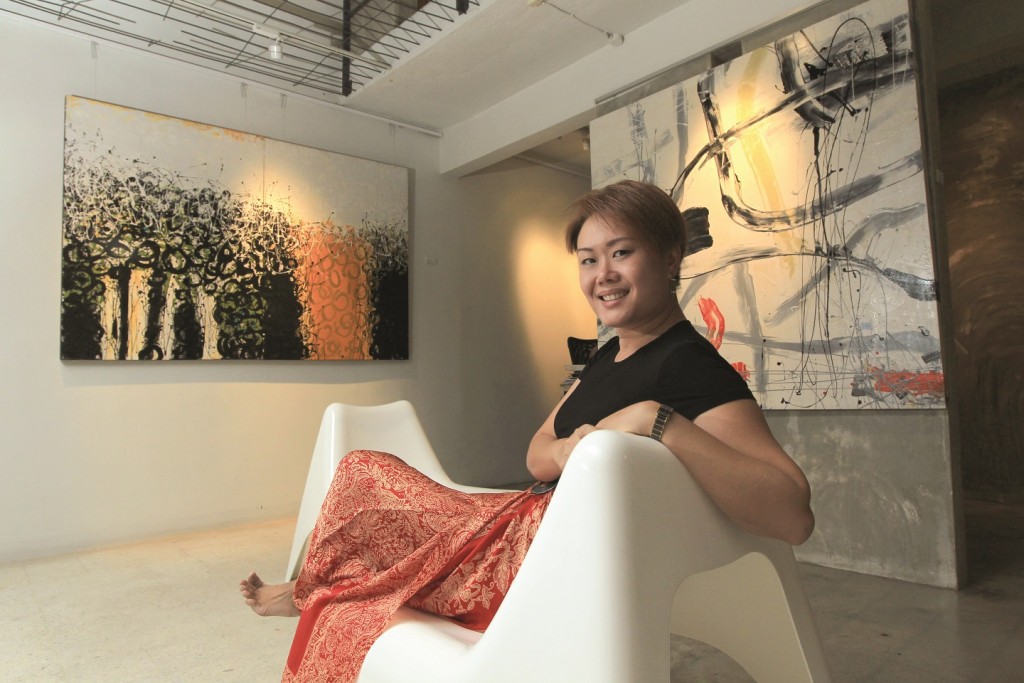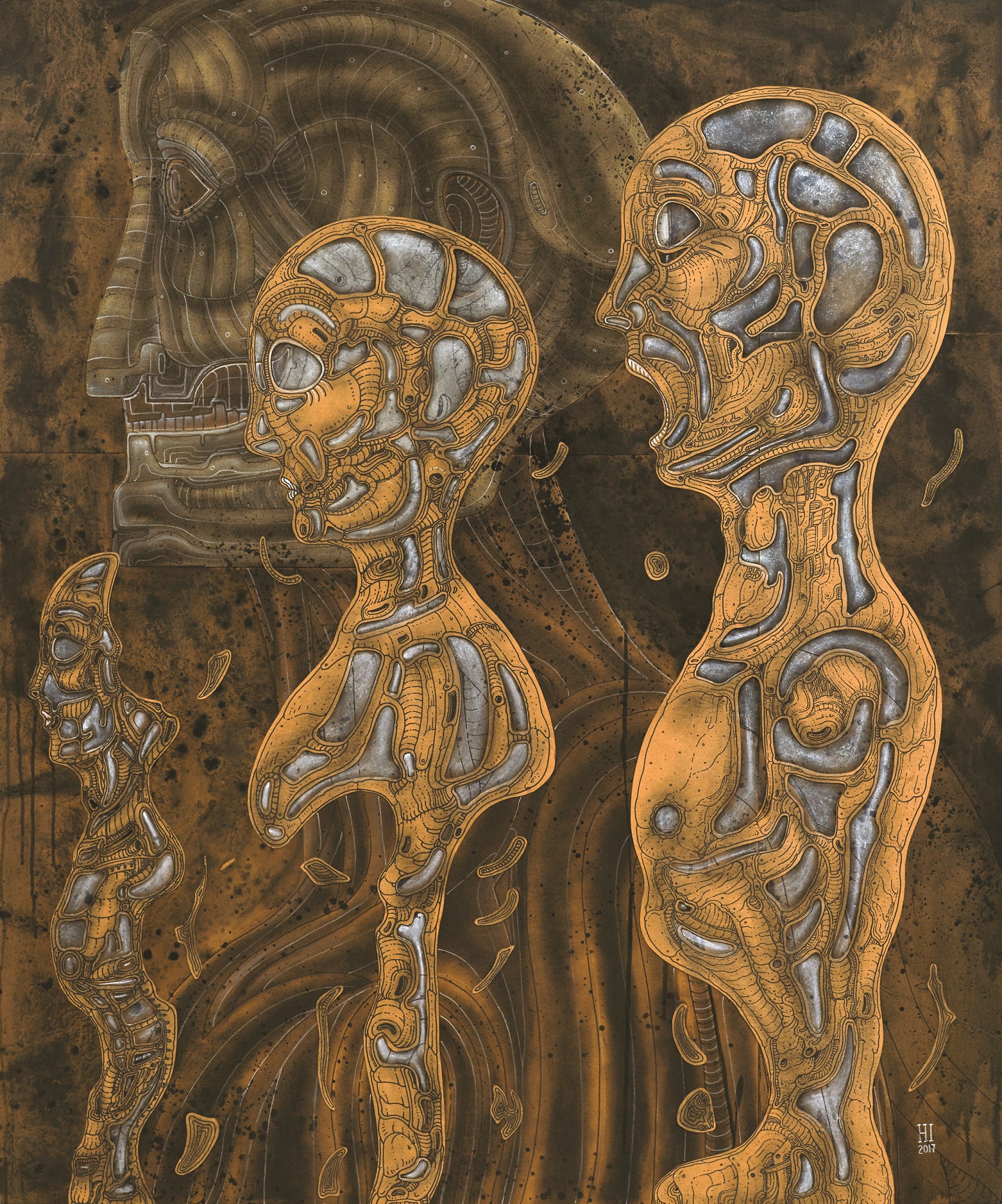
In 2015, college professor and author Michael J Lewis (American Art and Architecture) wrote a commentary on “How Art Became Irrelevant”. In it, one of the arguments he presented was how a misguided sense of broadmindedness, when it disguises indifference, is dangerous when it comes to contemporary art.
It was a very academic and lengthy essay, but this particular statement on its own came to mind after I visited Core Design Gallery’s latest exhibition, Much Ado About Drawing.
One of the common grouses I hear from the average person — who admittedly may not have a trained or particular interest in viewing art — is that contemporary art can be so weird or bizarre. Yet, Lewis would agree that even a real, untrained response is better than blanket acceptance.
In this case, Much Ado About Drawing is curator Scarlette Lee’s response to what she noticed — much to her frustration and concern — is a lack of formalistic discipline in some of the young contemporary artists she’s seen recently.
“People think that works that employ trendy mediums, such as video or installations, are automatically contemporary art. I disagree; it’s not about that,” says Lee.
Borrowing from the title of Shakespeare’s famous work, she decided to examine what is fundamental to an artist’s creative process by centring on the “very beginning” — drawing. “Due to technology advancements, some say ‘I don’t need to draw or sketch like artists from before’ to create art. It’s true, we are in the 21st century; it doesn’t work the same way anymore. But to me, every artwork still starts with a dot, and from there lines, and the lines create the form,” she says.

However, if you’re expecting an exhibition of drawings, you are in for a surprise. After all, it is not the literal skill of drawing that Lee wanted to highlight, but the formalistic and foundational process an artist goes through in creating — framed within the techniques and ideology of drawing.
“Take, for example, this year in New Zealand, the winner of a drawing competition presented a work that is a carpet cut-out hanging within a space. Why did it win? It showed that the formalistic process was still applied.”
The winner, Kristy Lillico, had re-presented a drawing made by someone else using knife and carpet hanging to achieve the same end as a pencil and paper would. Chris Parkin, the patron and founder of the prize, had said, “[It was] still lines, at the end of the day.”
“Drawing as a concept is impossible to define due to its rich etymological past… it is a theory I agree with,” observes Lee. She points to the artworks displayed — in their own way, the 10 artists involved presented their interpretations of how the concept of drawing is vital to their final artworks within their genres of mixed media, painting, ceramic, printmaking, calligraphy and more.
Haafiz Shahimi, who specialises in pyrography, presents two large works that exhibit drawing-like motifs that are reminiscent of ancient cave drawings. The “etchings” were made by chemically rusting metal plates that he first cut into various shapes, then burnt onto the canvas.
Employing an indirect form of pyro technique is Mohd Bakir B Baharom, whose work, The Melting Landscape, uses soot from burning candles and resembles a classic Chinese landscape painting.
Printmaker Faizal Suhif also presented two works, including a two-panel charcoal and acrylic drawing, A Piece of Land Dry Seasons, which he has worked on since 2010. “As a printmaker, drawing skills are a necessity, but in this, you can see his superb ability,” Lee says.
A popular and striking work is Husin Othman’s Random Access Memory (RAM), which features 16 square panels put together like a puzzle or the Rubik’s Cube that it takes its cue from. Using sketch lines as a motif, the drawings within each panel come together to reveal hidden and carefully composed figures layered underneath the entire work.
Also overtly incorporating drawing into his quadtych is Masnoor Ramli, who, in a departure from his more recent mixed-media works, challenged himself to create drawings on aluminium, which does not absorb colour easily. Exploring technology and human connectivity, Masnoor painstakingly sponged the metal to create its emotive texture and stain.
Exploring the role of drawing beyond a flat surface are Mohd Al-Khuzairie Ali’s edgy Addicted ceramic dolls, as well as Fauzin Mustafa and Haslin Ismail, who showcase the similarities of adhering to form and lines in the creation of collages.
Yet others chose to reveal the fundamental importance of drawing in their visualisation and “artistic process”. In Self Portrait, Khairul Izham presents what is almost a literal visual board filled with sketches and drawings. As the artist puts it, “It is the primary visual language” and “essential to our existence as intelligent beings”. Islamic art specialist Husin Hourmain’s wall-to-wall 28-panel work, Aku… Dalam Mencari Rukun — Working Drawings on Paper, offers a prelude to his upcoming solo show. While not necessarily his final thoughts, the works, based on the six principles of Islam, nonetheless have a strong and raw narrative that is revealing.
“Through this exhibition, we have made many interesting discoveries about the formalistic process of art. The most important finding is that drawing as a skill is most fundamental, and yet the ability to think through drawing and apply it with the knowledge available to us in this contemporary era is what differentiates it from being mere traditional craft and skill, but an intrinsic part of constructing and expressing ideas,” Lee says.


